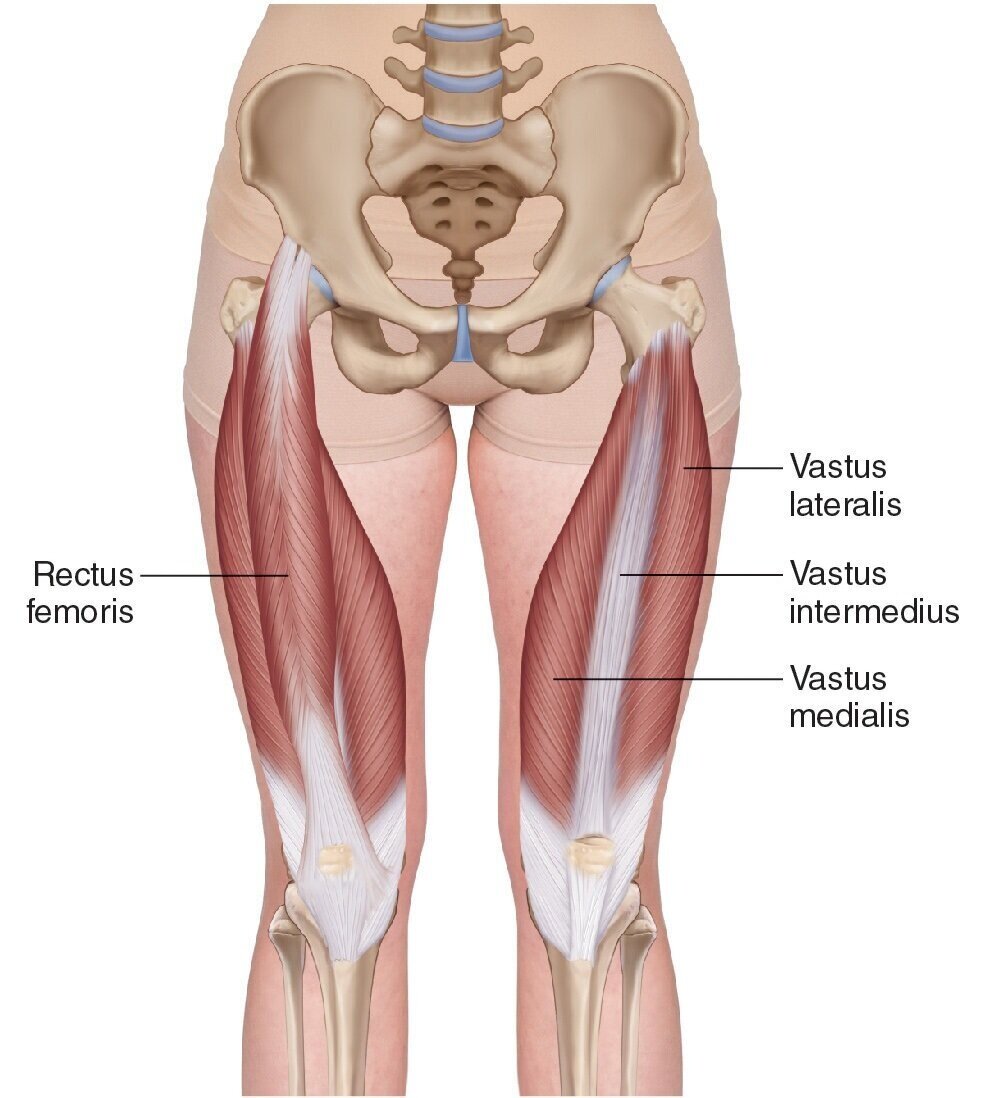Muscle of the day: Quadriceps
In contrast to popular belief, the quadriceps or quads are not a muscle but a group of muscles. Like the name implies (“quad”) there are four muscles in the group. They are located in and around the femur (thigh bone). They work to move the extend and flex the knee, moving it in an upward or downward motion. They are an important muscle group in many daily and sporting activities. They work with other muscle groups such as the hamstrings and glutes to allow you to perform activities such as walking, squatting, jumping, and climbing stairs.
Anatomy:
Vastus Medialis — This part comes from the upper two-thirds of the front of the femur. The muscle, as the name suggests, is on the inner side of the thigh and makes up the shape of the leg on that side, especially near the knee.
Vastus Lateralis — Opposite to the medialis, vastus lateralis comes from the upper, outer femur and creates the shape of the outer leg.
Vastus Intermedialis — This part sits between medialis and lateralis on the front of the thigh, and is below the rectus femoris muscle. It’s origin is the upper, outer aspect of the femur.
Rectus Femoris— This one comes from higher up. Its originates from the front of the pelvis and passes straight down the front of the thigh sitting on top of vastus intermedialis.
Common quadriceps injuries:
Contusion: The most common quadriceps injury is a contusion that results from a direct impact on your thigh. This occurs most often through involvement in sports or recreational activities
Quadriceps tendonitis: Extensive use of the quadriceps from sports or recreational activities can cause inflammation of the muscle and tendon that is located above your patella (kneecap). Movements that require sudden starting, stopping or turning can increase the risk of tendonitis to develop in your quadriceps, especially if they are repetitive and require large amounts of force.
Quadriceps strain: This occurs as the result of a sudden movement. You will often experience immediate pain if this happens. There are multiple types of quadriceps strains, with grade 1 involving the fewest associated symptoms while a grade 2 strain delivers additional pain, swelling, and a reduction in your strength. A grade 3 pull is more serious, as the quadriceps muscle fibers experience a full rupture.
Quadriceps tendon tear: If the quadricep muscles absorb the majority of impact when you complete a jump or are subject to a large amount of pressure on the muscles while your foot is planted the tendon of the quadriceps can tear or rupture. This can also occur due to a fall. A chronic condition that has reduced the strength in the tendon increases the risk of a tear.
Quadriceps exercises:
Quadriceps stretch:
While in a standing position, bend your knee back behind and hold your ankle/foot.
Next, gently pull your knee into a more bent position until a stretch is felt on the front of the thigh.
Wall slides:
Leaning up against a wall or closed door on your back, slide your body downward and then return back to upright position.
A door was used here because it was smoother and had less friction than the wall.
Knees should bend in line with the 2nd toe and not pass the front of the foot.



